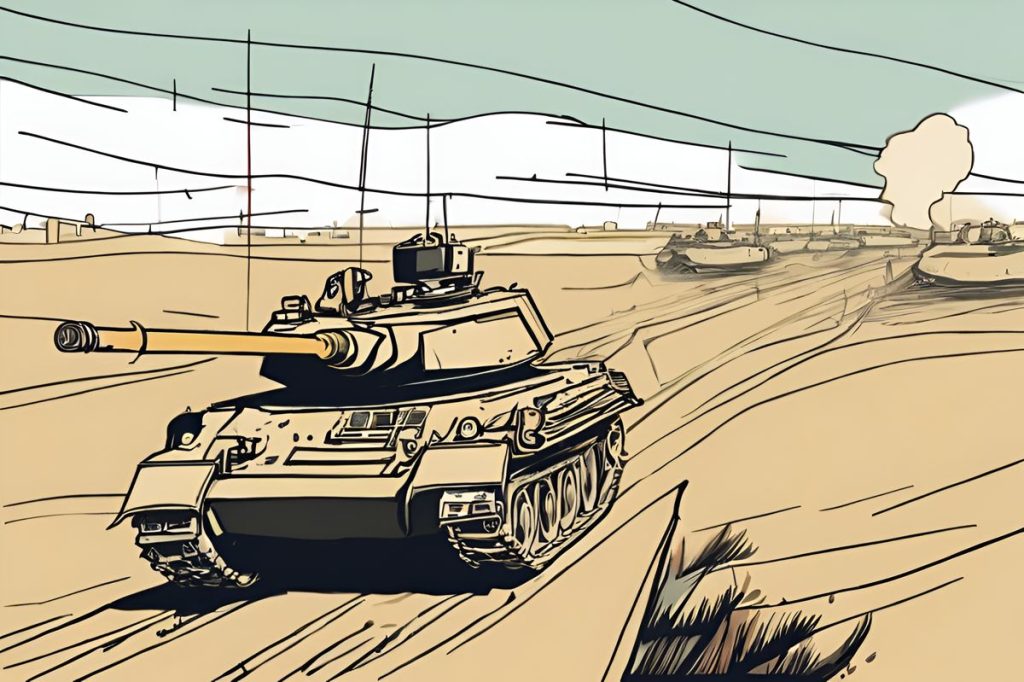Israeli forces have intensified their operations in Gaza, focusing on Rafah, with airstrikes and ground incursions. Despite mediation attempts, a ceasefire remains elusive, leading to significant casualties and ongoing hostilities.
What is the current situation in Gaza with Israeli forces?
Israeli forces have intensified operations in Gaza, particularly in Rafah, with airstrikes and ground incursions. Despite mediation efforts, a ceasefire remains elusive, resulting in significant casualties and ongoing hostilities. Diplomatic resolutions face challenges as both sides maintain firm stances.
Onslaught Under the Cover of Darkness
In the absence of a ceasefire agreement, the situation in Gaza remains dire as Israeli forces amplify their operations in the region. A particular focus has been the city of Rafah, where airstrikes and ground incursions occurred throughout the night. This escalation follows a stalemate in negotiations aimed at ending the hostilities that have plagued the area.
Witnesses report heavy confrontations between Israeli troops and Hamas-led militants. As tanks maneuvered along the Egypt-Gaza border, they launched several incursions toward Rafah’s western and central sectors, catching many residents off guard. Injuries were reported as some residents, previously sheltering in their homes, were struck unexpectedly. Communication with the outside world was limited, but one resident described the harrowing experience through a chat application, “It was one of the worst nights… before being evacuated this morning.”
The Struggle for Control
The intensity of the conflict has not been confined to Rafah alone; nearby Al-Bureij refugee camp experienced similar aggression. Ground operations there, paired with consistent shelling from the air and tanks, resulted in multiple Palestinian casualties. Fierce clashes have also erupted in other central and southern areas of Gaza, with various Palestinian factions engaging in combat to repel the advancing Israeli forces.
Mediators from Qatar and Egypt, with support from the United States, are working vigorously to broker a ceasefire. The objectives are multifaceted: to stop the fighting, secure the release of Israeli hostages, and negotiate the freedom of Palestinians detained by Israel. Despite these efforts, advancement toward a resolution remains elusive, with both sides maintaining their stances. Hamas calls for an outright end to the conflict, while Israel focuses on temporary ceasefires as a means to weaken the militant group.
The Human Cost
The ongoing conflict has exacted a grievous toll on human life. Since the beginning of the escalation last October, the casualty numbers have been staggering. Israeli sources report approximately 1,200 deaths following attacks on their territory, with about half of the hostages taken being released during a brief truce. On the Palestinian side, health officials fear the death toll exceeds 36,000, with additional losses anticipated as many may still be trapped in the ruins. While Israel reports nearly 300 military fatalities, Hamas has not disclosed its losses, and there is speculation that Israeli figures may be inflated.
Diplomatic Stalemate
The diplomatic effort to end the violence is fraught with challenges. A Hamas official, speaking to Reuters, highlighted the deadlock: “The occupation and the Americans are to blame for the absence of a deal so far because they don’t want this war on our people to end.” The blame game overshadows the grim reality on the ground, where each day without a ceasefire agreement means more destruction and suffering for the people caught in the crossfire.
The international community watches anxiously as the situation in Gaza unfolds. With each passing moment, the urgency for a peaceful resolution grows. Yet, as tanks roll through the streets of Rafah and the night skies light up with the glow of explosions, the prospect of peace seems a distant hope amidst the thunder of war.
What is the current situation in Gaza with Israeli forces?
Israeli forces have intensified operations in Gaza, particularly in Rafah, with airstrikes and ground incursions. Despite mediation efforts, a ceasefire remains elusive, resulting in significant casualties and ongoing hostilities. Diplomatic resolutions face challenges as both sides maintain firm stances.
What is the latest update on the conflict in Rafah under the cover of darkness?
In the absence of a ceasefire agreement, the situation in Gaza remains dire as Israeli forces intensify their operations in Rafah. Witness report heavy confrontations between Israeli troops and Hamas-led militants, with tanks launching incursions into residential areas. The escalation follows a stalemate in negotiations aimed at ending the hostilities.
How has the conflict extended beyond Rafah to other areas in Gaza?
The conflict has spread beyond Rafah to areas like the Al-Bureij refugee camp, where ground operations and shelling have resulted in multiple Palestinian casualties. Clashes have erupted in central and southern Gaza as various factions engage in combat. Efforts are being made by mediators from Qatar, Egypt, and the United States to broker a ceasefire and end the violence.
What is the human cost of the ongoing conflict in Gaza?
Since the escalation began last October, the conflict has resulted in a staggering number of casualties. Israeli sources report approximately 1,200 deaths following attacks on their territory, while Palestinian health officials fear the death toll exceeds 36,000. The diplomatic efforts to end the violence face challenges as both sides blame each other for the absence of a ceasefire agreement.

